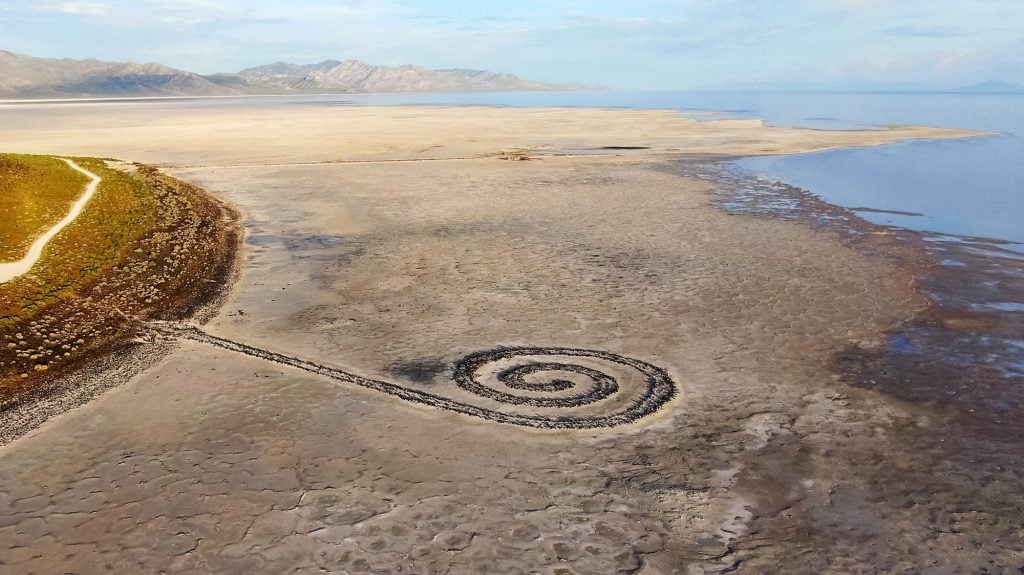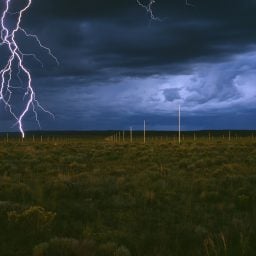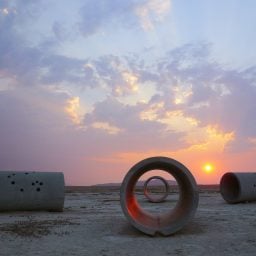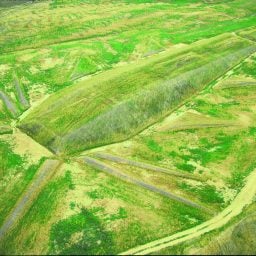What does it take to be a collector of land art? By its very nature, the genre has its share of challenges for anyone wishing to make the work their own. Directly embedded in the great outdoors, land artworks are often large in scale and intentionally ephemeral, meant to decay over time rather than being preserved in any traditional sense.
Artnet News reached out to some of the leading experts in the field to demystify this complex genre for any would-be collectors wondering where to start. They shared various ways that venturesome art lovers can engage, ranging from financial support for major site-specific projects to collecting land artists’ works and documentation materials across other media, such as drawings, photographs, and video.
Keeping an open mind might just be the first important lesson for anyone wanting to enter the field of land art. Prospective collectors “have to be embracing of process,” said Mary Sabbatino, vice president and partner of Galerie Lelong. The gallery represents artists like Andy Goldsworthy, who has made sculptural works within natural landscapes all over the world. “All outdoor works change once they’re outside, no matter what kind of maintenance you do. That kind of entropy is part of the process, and that’s not for everyone.”
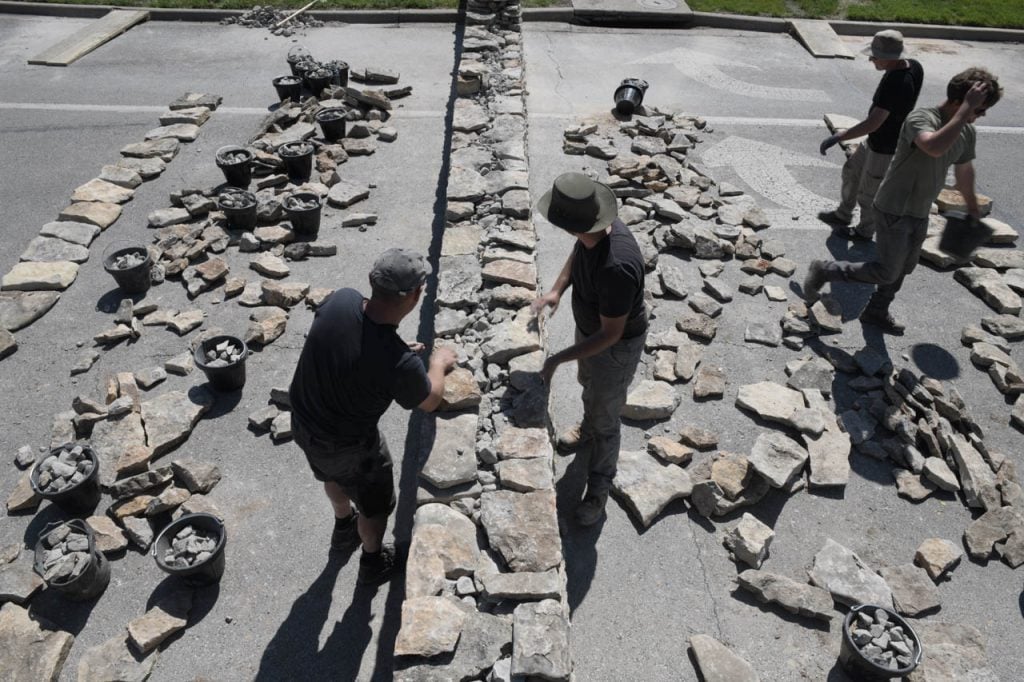
Andy Goldsworthy Walking Wall (in progress) (2019). Nelson Atkins Museum of Art. © Andy Goldsworthy. Image courtesy the artist and Galerie Lelong & Co.
In the early 1990s, Goldsworthy was asked to build a stone wall through a tree that had fallen on a collector’s property. Sabbatino noted how the collector “embraced the decay.” She envisioned the sculpture taking the place of an earlier wall on the site and accepted the eventuality that “after she was gone, others would build their wall on top of her wall,” Sabbatino explained. “That’s kind of the ideal attitude towards having a work that is made from nature, in nature.”
The most successful outdoor projects happen when the artist can have a “hand-in-hand relationship and really partner” with a collector or museum on developing the work. Sabbatino cited the Ohio-based private collector Scott Mueller who, with his wife Kelly, has commissioned ambitious outdoor installations like Richard Serra’s Rowdy Meadow Ridges (2018), which involved creating a road on a steep slope into a heavily wooded area.
While monumental sculpture might seem out of reach for emerging collectors without acres of land, there is an accessible market for “works that come out of these kinds of projects,” said Sabbatino. For instance, artist Michelle Stuart has made drawings on scrolls, book sculptures, and other objects using remnants of earth collected during her travels around the world.
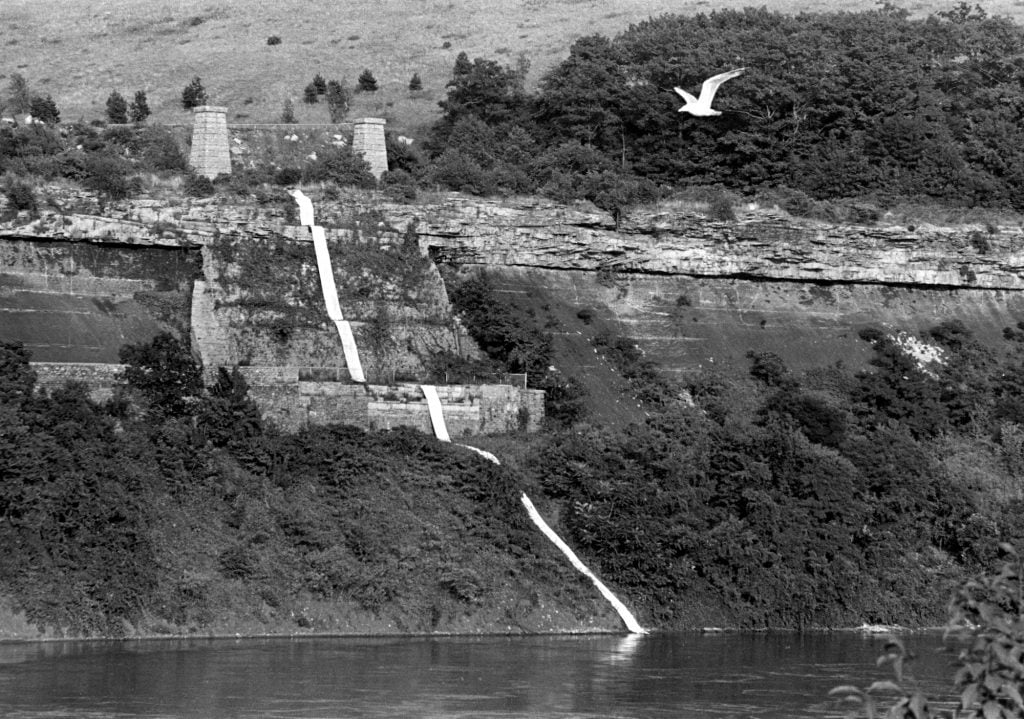
Installation view of Michelle Stuart Niagara_Gorge_Path_Relocated (1975). Image courtesy Galerie Lelong.
Photography, too, has had an important role in immortalizing land art beyond its remote locales. Artists like Robert Smithson intended these works to be “a physical experience,” noted former Dia Art Foundation curator Alexis Lowry, who is now a curatorial director at Hauser & Wirth. Yet at the same time, they also “realized that most people were going to see them in pictures. So there has been an inherent tension in the reception of the work that I think is ever unresolved. That’s part of what makes these projects continually interesting.”
Goldsworthy captured some of his early land works on camera, but he did not consider the photographs as artworks in their own right. “Those works are often given to the respective organization as documentation,” Sabbatino said, whereas collectors can purchase the artist’s works in the landscape on the understanding they are ephemeral and site-specific commissions. Once completed, they cannot be moved.
When it comes to maintaining land art, there is no one-size-fits-all approach, as the biggest institutions in the field can testify. “Every single artwork has a different set of protocols and requirements,” said Lisa Le Feuvre, the inaugural executive director of the Holt/Smithson Foundation, dedicated to land art’s power couple, Nancy Holt and Robert Smithson.
For instance, Smithson conceived his legendary Spiral Jetty as “an artwork that will really feel the process of entropy. There is a real temporal aspect to it.” The monumental 1970 earthwork is located off the northeastern shore of the Great Salt Lake in Utah. Smithson gathered black basalt rocks and earth from the site to form a 15-foot-wide coil that stretches more than 1,500 feet into the lake.
In contrast, Holt’s Sun Tunnels (1973–76) was “built to withstand the test of time,” said Le Feuvre. The artist arranged four concrete structures in Utah’s Great Basin Desert in a cross formation, precisely positioned to frame the sun as it rises and sets during the summer and winter solstices.
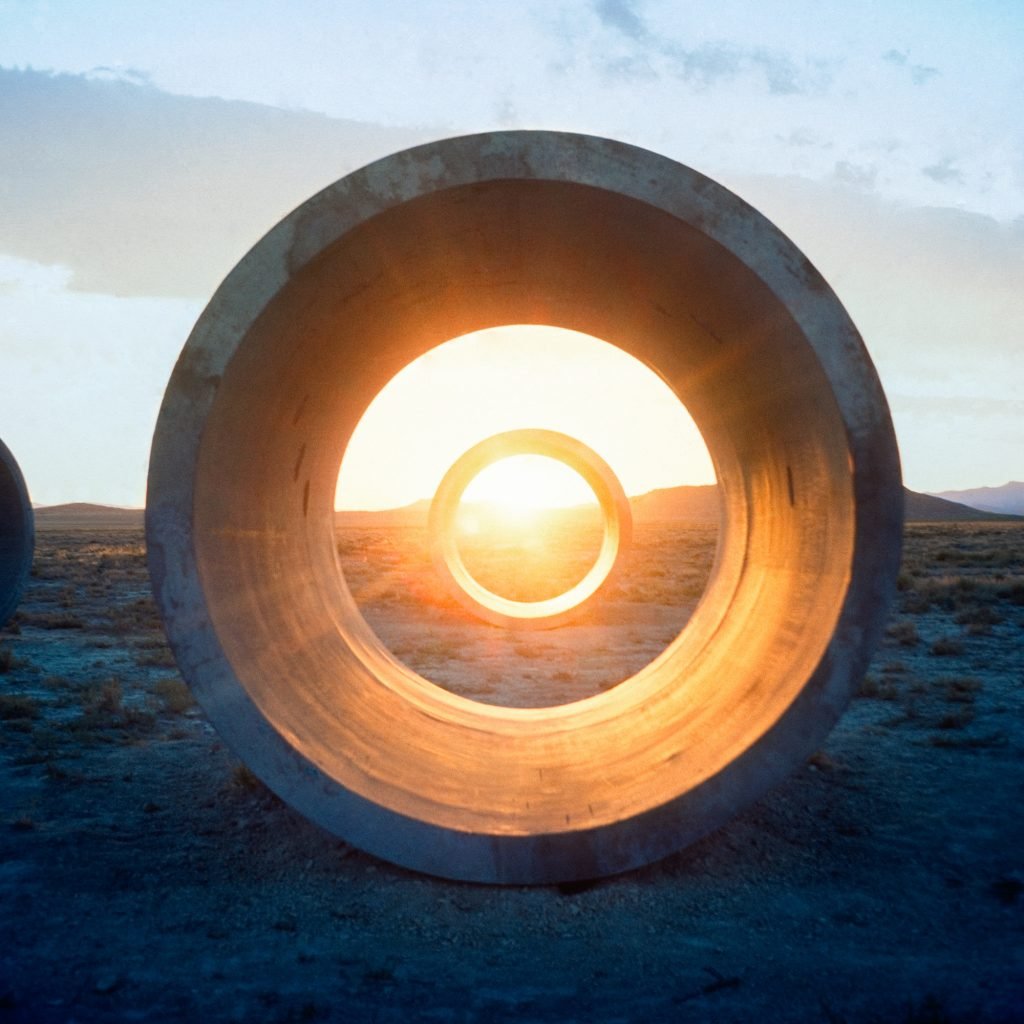
Nancy Holt, Sun Tunnels (1973-76) Great Basin Desert, Utah. Photograph: Nancy Holt. Collection Dia Art Foundation with support from Holt/Smithson Foundation. © Holt/Smithson Foundation and Dia Art Foundation / Licensed by Artists Rights Society, New York.
While the Holt/Smithson Foundation oversees the intellectual legacy of both artists’ projects through new exhibitions, publications, and research, Spiral Jetty and Sun Tunnels are owned and stewarded by the Dia Art Foundation. Established in 1974 to support visionary artists’ projects, Dia has pioneered collecting models for site-specific land art in the United States and beyond.
Dia curator Matilde Guidelli-Guidi described its model of “collective stewardship” for the extraordinary sites in its care. In the case of Spiral Jetty, “no one can own the land because it’s on the Great Salt Lake, which means that it’s public domain as a waterway,” she said. So visitors are free to come and go at all times of year, but “we make sure the artwork is preserved.”
To do so, the foundation relies on regional partners such as the Utah Museum of Fine Arts, the Center for Land Use and Interpretation, and the Great Salt Lake Institute, which researches the flora and fauna on the lake from a scientific standpoint.
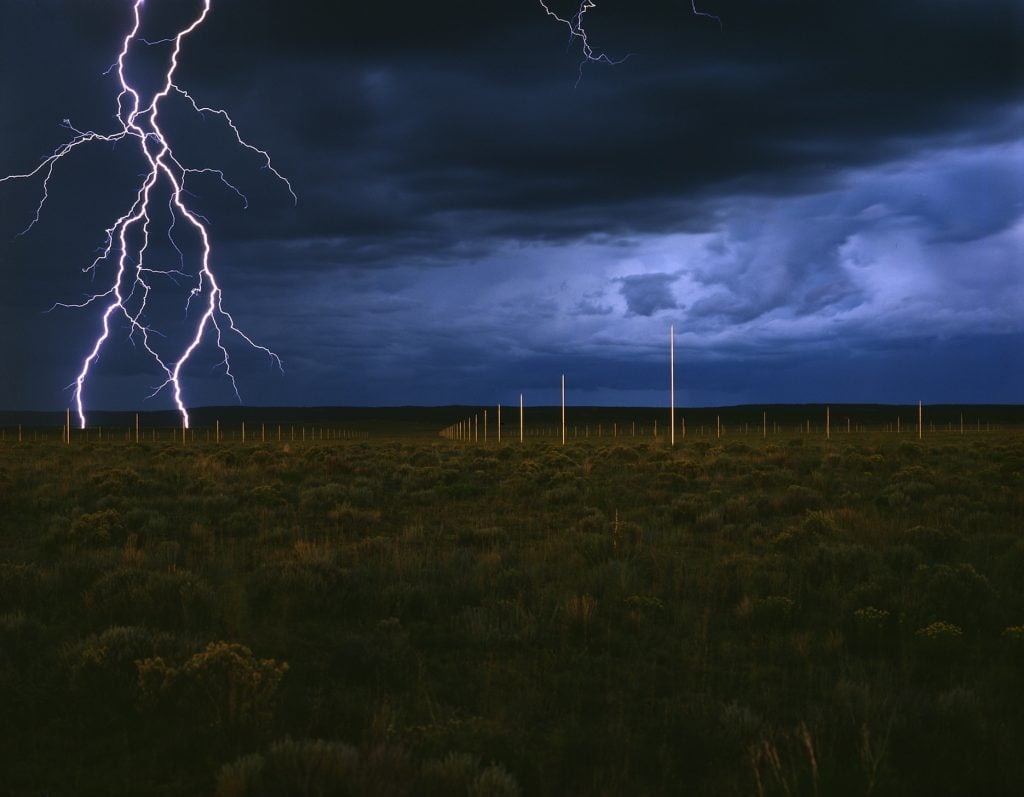
Walter De Maria, The Lightning Field (1977). Long-term installation, western New Mexico. © Estate of Walter De Maria. Photo: John Cliett, Image courtesy Dia Art Foundation, New York.
Dia also commissioned one of Walter de Maria’s most famous projects, The Lightning Field (1977), for which it purchased the remote desert site in western New Mexico. “There are very specific conditions because Walter de Maria wanted people to experience isolation beside the work,” Guidelli-Guidi said. Visitors are required to book an overnight stay in a cabin near the site between May and October. As many as 2,000 people compete for every slot, which is limited to a group of six.
Dia’s ground staff maintain The Lightning Field year-round, “regardless of whether it’s open for visitation or not,” said Guidelli-Guidi. Keeping the land clear also involves “a network of conversations with all the people who live near and around.”
Preservation is a multifaceted endeavor, said Lowry, involving direct care of the physical sites but also raising awareness and enthusiasm “from partnering organizations, collectors who are donors or supporters of those organizations and the general public.”
“All of these works need advocates more than anything else. They need resources, but resources come through advocacy.”
The Holt/Smithson Foundation is even taking its advocacy on the road with exhibitions like SITE Santa Fe’s upcoming dialogue between Smithson and artist Teresita Fernandez. A major Holt survey show is currently on view at the Gropius Bau in Berlin.
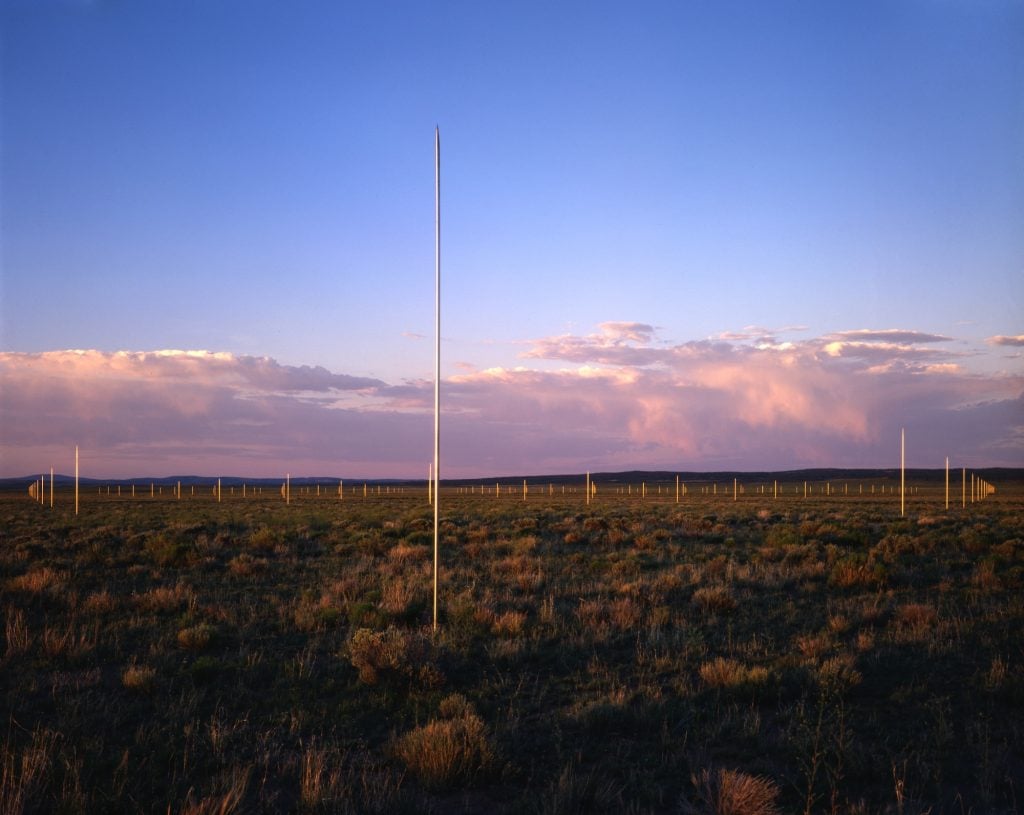
Walter De Maria, The Lightning Field (1977). Long-term installation, western New Mexico. © Estate of Walter De Maria. Photo: John Cliett, Image courtesy Dia Art Foundation, New York.
One recent collaboration saw Holt’s films presented at artist Rachel Rossin’s pop-up space Dunkunsthalle, located in a former Dunkin’ Donuts in downtown Manhattan. Curator Lola Kramer particularly wanted to screen a film that documents the making of Sun Tunnels, a work she had studied in college, but never had the chance to visit in person. “Not having been there to the Great Desert Basin in Utah, I wanted to see this for myself. I thought, ‘I’m probably not the only one who hasn’t been able to see it.’” Kramer said.
Fifty years after the 1970s heyday of land art, its custodians are preparing for a future when the movement’s memory will live on beyond the iconic sites that made it famous. The Holt/Smithson Foundation, which was willed by Holt at the time of her death in 2014, is set to dissolve in 2038, a century after the artists were born. “We don’t want to be a foundation that is possessively clutching these artworks. We see the artworks as needing to be out in the world,” Le Feuvre said.
In this way, collectors have a vital role to play in giving land art a “long-term home” that will reposition the movement in fresh contexts. “We really feel that the best place for these artworks is in museum collections, whether public or private,” Le Feuvre said. “In a collection, artworks speak to other artworks. That’s where we find connections and get an ignition of ideas.”
